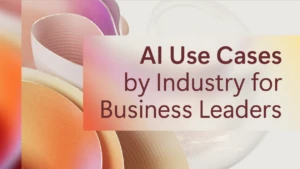
Connected cars: Revving up in-car customer experiences
By 2020, approximately 61 million vehicles on the road will be connected, according to a press release from Gartner Research .* That means car buyers in the future will do more than kick tires and check under the car hood. They will also look closely at what’s inside your car—sizing up its in-car digital experience before driving off the lot.
A smart, connected car can differentiate your brand and build greater customer loyalty and advocacy. Connected cars offer customers a rich driving experience through options such as advanced navigation (incorporating real-time traffic and weather conditions as well as personalization based on individual preferences), entertainment and productivity solutions that keep drivers connected while reducing distractions, predictive maintenance, and AI (or a personal assistant).
These vehicles also generate a wealth of valuable data that benefit auto manufacturers. These insights not only help a manufacturer improve its products and create better customer experiences. They can also point a manufacturer to developing services that will provide new revenue streams in the future.
On-ramp to the digital revolution
Barriers between the office and home have long been dissolved, thanks to the cloud. We’re now connected all the time, wherever we go. It’s only natural that our vehicles offer similarly abundant digital environments while providing a safe and fun driving experience.
So how can you start offering personal, predictive, and proactive driving experiences in a connected car? You can begin with predictive maintenance. Car owners are accustomed to preventive maintenance. We’ve all seen those preprogrammed signals appear on our dashboard, indicating it’s time to schedule an oil change even if it’s not yet needed.
With a connected car, however, you can alert drivers when it’s time to service your vehicle based on real-time data. Predictive maintenance analyzes car data that’s based on how you actually drive. For example, driving on the freeway might signal less frequent vehicle maintenance alerts than if you spend more time pumping brakes in city traffic. Predictive maintenance becomes even more transformative when you combine vehicle-based data with external sources, such as weather data. Assimilating data from several sources lets you create even more accurate alerts.
Loyal customers, increased revenues
Using intelligence built into the car or through the cloud, auto manufacturers can collect and analyze customer data based on actual wear and tear on each part of the vehicle. You can provide alerts to drivers (either for free or as a monetized service) to bring their vehicle in before mechanical failures occur, thus helping to avert unexpected mishaps, unsafe driving situations, and costly repairs.
According to McKinsey & Co., data from vehicles could create $750 billion in business by 2030. In other words, data that supports predictive maintenance does more than just improve customer experiences, build loyalty, and lower the cost of customer acquisition. It also opens a world of opportunities to create new streams of revenue.
At Microsoft, our digital team partners with auto manufacturers to bring the flexibility of the cloud into connected cars. We help create in-car digital experiences that delight your customers and work with you to design a roadmap to reach your destination.
Where do you want to go?
*Gartner Press release , Gartner Says Connected Car Production to Grow Rapidly Over Next Five Years, http://www.gartner.com/newsroom/id/3460018
Learn how to transform manufacturing
with Microsoft Services




